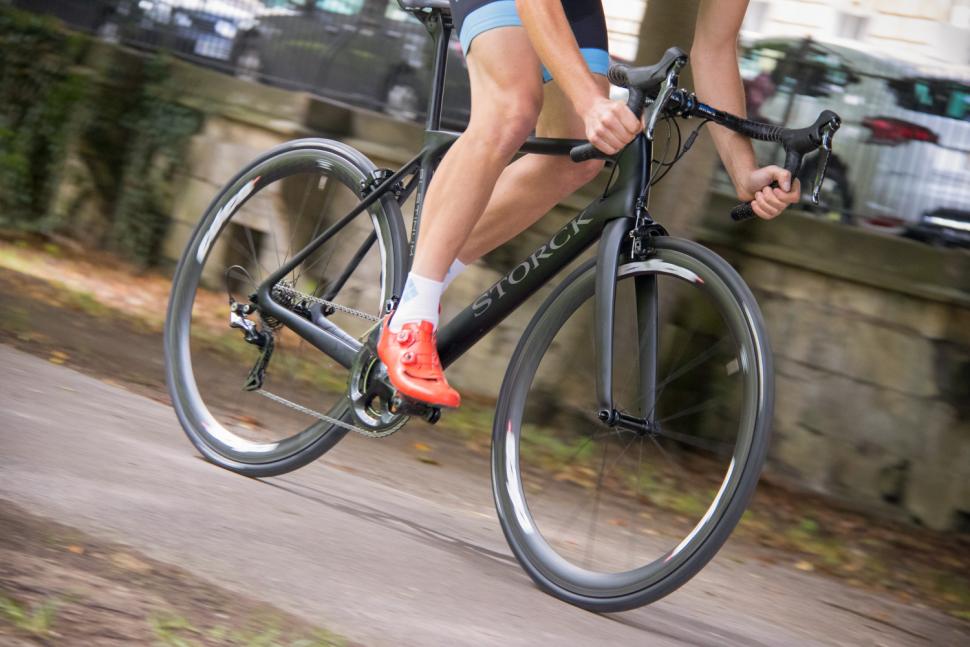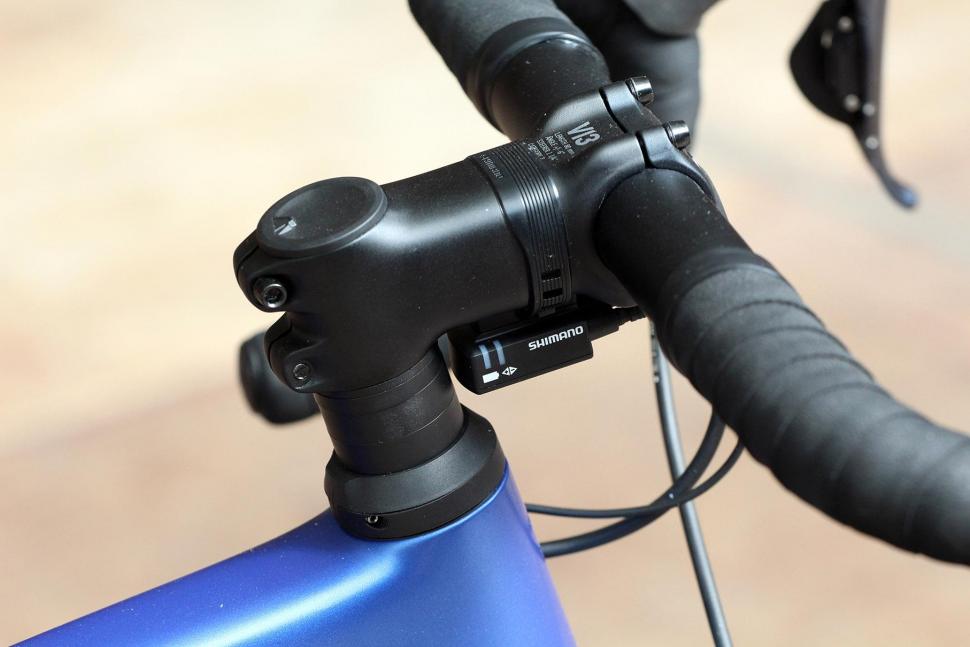- News
- Reviews
- Bikes
- Accessories
- Accessories - misc
- Computer mounts
- Bags
- Bar ends
- Bike bags & cases
- Bottle cages
- Bottles
- Cameras
- Car racks
- Child seats
- Computers
- Glasses
- GPS units
- Helmets
- Lights - front
- Lights - rear
- Lights - sets
- Locks
- Mirrors
- Mudguards
- Racks
- Pumps & CO2 inflators
- Puncture kits
- Reflectives
- Smart watches
- Stands and racks
- Trailers
- Clothing
- Components
- Bar tape & grips
- Bottom brackets
- Brake & gear cables
- Brake & STI levers
- Brake pads & spares
- Brakes
- Cassettes & freewheels
- Chains
- Chainsets & chainrings
- Derailleurs - front
- Derailleurs - rear
- Forks
- Gear levers & shifters
- Groupsets
- Handlebars & extensions
- Headsets
- Hubs
- Inner tubes
- Pedals
- Quick releases & skewers
- Saddles
- Seatposts
- Stems
- Wheels
- Tyres
- Health, fitness and nutrition
- Tools and workshop
- Miscellaneous
- Buyers Guides
- Features
- Forum
- Recommends
- Podcast
How to choose the best stem length
How do you find out the correct stem length for you and your bike?
I’m going to start by suggesting the best way to find the answer to that question is to arrange a professional bike fit with a reputable bike shop. Most shops offer bike fits of various varieties from simple to advanced, and many offer it as part of the buying process so you’re not charged loads of extra money on top of your new bike.
Stems come in many lengths from stubby to super stretched. Put simply, if you want a racy, aggressive and aerodynamic position, a longer stem will provide a more stretched out riding position. If comfort is your top priority, a shorter stem length will bring the bars closer to the saddle and put you in a more upright position, placing less strain on your back.
But the stem length needs to be considered as part of the bigger picture of the frame size, saddle height, saddle fore-aft adjustment and the shape and size of the drop handlebars. That’s where a professional bike fit is invaluable, as all those other factors will be considered.
How to find right right drop handlebar for you + 8 of the best
Read more: 9 top tips for setting up your new road bike
Stem length affects handling
Changing the stem length not only impacts your fit and comfort, it affects the handling dynamics of a road bike. A shorter stem will result in snappier steering, a longer stem will produce slower steering. Adjusting the stem length can be used to tailor the handling. That’s generally why cyclocross races use a shorter stem, and long distance road cyclists opt for a longer stem.
Correct reach
Stem length alters the distance you have to reach to the handlebars. If you’ve been riding your bike for some time though and you’re happy with the general fit, a good indication of whether the stem length on your bike is correct is simply to go on how you feel. Do you feel too stretched and reaching the hoods strains your back? Or do you feel cramped? Pain in the neck, shoulders and lower back can be clear indicators that you might be better off with a longer or shorter stem.
- 9 ways to make your bike more comfortable
Optimum position
What you’re aiming for is a position that ensures you have a slight bend in the elbows to allow your arms to bend easily as the front wheel tracks the road surface. You don’t want your arms locked out straight, that’s a sign of a stem that is too long. It’s tricky to assess yourself when riding though - riding past shop windows is a good tip, but even better is, as I’ve mentioned before, getting a professional bike fit.
One good rule of thumb for choosing the correct length stem (and it works for the road.cc team) is to sit on the bike with your hands on the top of the hoods and look down at the front hub. If the stem length is correct, the handlebars should completely hide the front hub. If you can see the hub in front of the handlebar, the stem is too short.
Experiment with stem length
Don’t be afraid to experiment. Making small changes can bring about noticeable improvements in comfort or aerodynamic performance, depending on what you’re trying to achieve.
If you’re friendly with your local bike shop they’ll likely have a couple of spare stems and they’ll lend you one to try out, or you could try a cycling friend or even your local club.
Start with a stem that is 10mm longer or shorter, depending on whether you want to extend or reduce your reach to the handlebars, and go for a ride. How does it feel? Better? It’s good to do a couple of rides of decent length to see how the stem length change impacts your riding comfort.
But if you’re making radical changes, a 70mm stem on a 58cm frame or a 140mm stem on a 52cm frame, for example, is a clear indication that you might be riding the wrong frame size.
Read more: How to fit and set up a saddle
Frame size-specific stem lengths
Most bike manufacturers fit different length stems across the size range, so shorter stems on smaller frames and longer stems on larger4 frames. This size-specific approach goes a long way to getting you set up with the correct stem length, providing you’ve chosen the right size frame (another area where a bike fit comes in useful).
Generally speaking, stem lengths on road bikes vary from 80 to 140mm, with 100mm and 110mm the most common sizes. There are shorter and longer stems available if you’re short or very tall and ride a frame size at the extreme end of the size range.
Stem angle
The other factor to also consider when choosing stem length is the rise of the stem. If you want a lower position, opt for a stem with a negative rise that lowers the handlebar height in relation to the ground. If you're after a more upright position, a stem with a positive rise will lend you a more comfortable fit. It’s all down to personal preference.
Don’t copy the pros
Over the years I’ve seen many amateur cyclists simply take their stem length decision directly from what the pros are using, but a word of warning. A professional cyclist covers 30,000+km in the saddle each year. The bike is essentially their office, and their bodies are conditioned to a stretched, aerodynamic position. Plus, they do a lot of core work in the winter to give them the strength and flexibility to maintain such positions.
But there are many pros that clearly ignore sensible bike fitting advice and forge their own path, and pros riding smaller frame sizes and fixing the reach with a super long stem is common in the peloton. That’s why 130 and 140mm are common stem lengths, and we’ve even seen custom made 150mm stems on some bikes.
Based on that, I wouldn’t advocate copying any professional rider when choosing your stem length. They might look fast and slammed but replicating their fit could be asking for back and neck trouble. You’ve been warned.
Read more: Tour Tech 2017 – The stems the pros are using
There’s an app for that
Yes, in this world of apps for everything, there are some apps that claim to be able to help you adjust your stem length and bike fit from the comfort of your living room.
Bike Fast Fit uses the phone's video camera to dynamically record the rider’s position to analyse a whole range of measurements, including stem length as part of the frame reach, forearm and torso angle.
We hope this was helpful? If you have any tips you use for setting the correct stem length, do add them to the comments below.
David worked on the road.cc tech team from 2012-2020. Previously he was editor of Bikemagic.com and before that staff writer at RCUK. He's a seasoned cyclist of all disciplines, from road to mountain biking, touring to cyclo-cross, he only wishes he had time to ride them all. He's mildly competitive, though he'll never admit it, and is a frequent road racer but is too lazy to do really well. He currently resides in the Cotswolds, and you can now find him over on his own YouTube channel David Arthur - Just Ride Bikes.
Latest Comments
- chrisonabike 2 sec ago
On the last that's also a problem of success in many ways and I don't think is fixable by "more of the same". Roads attract motoring - better...
- hawkinspeter 13 min 2 sec ago
The kind of common sense that associates global financial crises and recession with a need to cut back on libraries and allow unlimited banker...
- chrisonabike 15 min 10 sec ago
There you go, you had a chance to correct your tacit support for the cultural revolution (and you've been silent on the burning of the Library of...
- hawkinspeter 1 hour 26 min ago
To be charitable to the police (though I wonder why I should), they're acting on a specific complaint raised by the motorist and so are doing their...
- chrisonabike 2 hours 44 min ago
Get "rats for LTNs and modal filters" founded immediately or we're doomed!
- chrisonabike 2 hours 46 min ago
They almost never get to experience them... https://m.youtube.com/watch?v=ngifg--1eW4
- stonojnr 2 hours 54 min ago
its tricky because there are arguably hundreds, maybe even thousands of "problem areas" on any sportive route, that potentially could result in the...
- check12 13 hours 55 min ago
Surely please get down on your knees, rappers rap about gats not cats and foil isn't made from oil and can hold your all told
- David9694 15 hours 29 min ago
Elderly man sentenced following serious crash in Ringwood...



Add new comment
37 comments
And shoulder/hand issues, as less of your upper body weight is being borne by them in a more upright position.
I've got fairly long arms for my height/upper body but with old hand/shoulder injuries but fortunately I've alwsys tended to buy a frame size that most would deem to be far too large (5ft 11 and 3 of my rides are 59/61cm sloping and a 62cm traditional) but still use a 100/110 stem and the longer/taller headtube helps alleviate the pressure.
Another point worth noting: From painful personal experience, I can say that replacing a long stem with a shorter one can be an effective means of reducing/eliminating neck problems (aka, Schermer's neck).
"If comfort is your top priority, a shorter stem length will bring the bars closer to the saddle and put you in a more upright position, place less strain on your bike."
Really? Is this simply a typo, where, if you're talking about comfort, you actually mean 'place less strain on your back'?
Clearly it's a typo that I missed. Thanks for pointing it out, I have amended it
So there's only iPhones out there, from the one app link provided.
If it's true that "Reach is a measurement from the centre of the head tube to an imaginary vertical line drawn through the bottom bracket", as you say, then a stem can't have any effect on this.
I understand what you're trying to say, but I think you need to rewrite that paragraph. You need to introduce something like "effective reach" perhaps?
Good point, have tweaked that para. Thanks
Pages